September 30, 2015
By Miron Ghiu
A short journey through imaginary music with Octavian Nemescu
One of Romania’s most important composers in the last half-century, Octavian Nemescu is among the few that are not “part of the system”, managing to survive and compose in a world that feels more and more “empty”, fragile, confused and scarce in prophecies. Born in 1940 in Paşcani, Nemescu wanted to study Law and Music, even though his initial thought was to study Theology. But he was not allowed to go to two separate schools in the 60’s on taxpayers’ money, so he chose music.
The year 1965 was a very liberal moment in Romanian culture and it translated into a full explosion in all of the artistic fields, when creators such as Blaga, Arghezi, Bacovia or Ion Barbu were rehabilitated, and Nichita Stănescu, Marin Preda and other youths like Marin Sorescu or Ioan Alexandru made their debut in the literary world. In the visual arts, Brâncuşi and Ţuculescu’s names were also restored, while Apostu, Mărginean, Paştina, Paul Gherasim, Nicodim and Sârbulescu, as well as those in the same generation: Marin Gherasim, Sorin Dumitrescu, Wanda Mihuleac, Florin Ciubotaru, Ion Stendl, Horia Bernea, Eugen Tăutu, Emil Ciocoiu took off. In music, everyone payed attention to Tiberiu Olah, Ştefan Niculescu, Aurel Stroe, Anatol Vieru, Myriam Marbe, Cornel Ţăranu, as well as those in Nemescu’s generation: Corneliu Cezar, Lucian Meţianu, Mihai Mitrea Celarianu, Corneliu Dan Georgescu, Nicolae Brânduş, Horaţiu Rădulescu, Iancu Dumitrescu, Liviu Glodeanu, Mihai Moldovan and Ulpiu Vlad, all of whom were interested in the avant-garde. Back then, during the late 50s and early 60s, when modernism was forbidden in the Romanian arts and when social realism was forcefully imposed, Nemescu was part of a so-called “resistance group” (the OCL) together with Corneliu Cezar and Lucian Meţianu. During that same year, young Nemescu was one of the first “ecologists”, with early public space works that included adding nature and cricket sounds to a spiral by Wanda Mihuleac by Plumbuita Lake. Up until 1971, music artists were spoiled by the system, having the freedom to express themselves in a world in which social realism was obsolete. This generation’s main enemies, in regards to music, were the so-called followers of Păunescu, backward people that exclusively cultivated folklorism and ran the Composers Union.
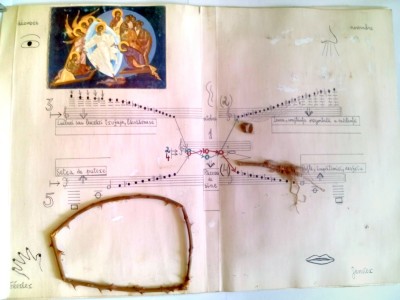
Octavian Nemescu, Music score – Nonsimfonia V / Nonsymphony V
The most glorious moment in Romanian music history happened, according to Octavian Nemescu, in the 1980s when two concerts dedicated to Romania took place – “Romania in the ninth heaven” – with music by composers Ştefan Niculescu, Tiberiu Olah, Anatol Vieru, Aurel Stroe, Myriam Marbe, Horaţiu Rădulescu, Iancu Dumitrescu, Octavian Nemescu, Mihai Mitrea Celarianu, Costin Cazaban and Horia Şurianu, at a time when the Polish avant-garde, which was very popular, was replaced by the Romanian avant-garde. Today, in full postmodernism, the latest European trend that we haven’t been able to shake off just yet, a time of drought highlighted by the rise of pop-art, Nemescu doesn’t agree with the concept of “mass culture” that is being cultivated by both totalitarian and democratic regimes under the pressure of hedonist-consumerists mentalities, thus confirming what René Guénon said in regards to “The reign of Quantity”. He plays music exclusively for the initiated, those that live on the higher levels of existence, and is firm believer in the concept of “egregor” (thought form), the idea that, in the plane of existence, it manifests itself as an unseen transcendental wind that drive the minds of people in a certain direction. The composer is against religious fanaticism and fundamentalism, even though there are mystical undertones in everything he does. He sees himself as a universal believer, a spiritualist that believes in the Underworld and in reincarnation, constantly having the feeling that “he’s already been in certain places” in another life. One of his most important and interesting works is the so-called “Music of time and place”, a cycle of 24 compositions for every hour of the day that is deeply rooted in the Egyptian beliefs about rituals for preparing the initiated. So, as is the case with any ritual, music must also happen in certain moments of the day, year and season, and only at certain hours, an idea that has been forgotten since the Renaissance. This cycle talks about the journey to the Underworld, where those initiated were placed in sarcophagi and traveled for 24 hours. Not all of them would return, some were undoubtedly dead, but those that did come back where different, illuminated, they were the great insiders with a new vision of the world. “The music of hours” must be done in the form of an upside down pyramid. In the underground areamusic is played at midnight. At the ground floor music starts at 1 o’clock and travels all levels till midday, when it descends on the other side of the afternoon. It is Altitude music.
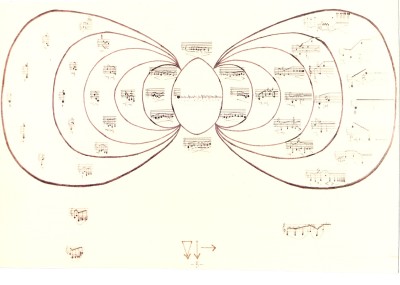
Octavian Nemescu, Music score – Shell (clam) spiral
This mystical approach to his art defines Octavian Nemescu as an essentialist that believes in the power of archetypes in which he finds inspiration, while also provoking and invoking them every time. Convinced that we are living a moment of cultural depletion where, besides the effort of recovering traditions, the exaggeration of postmodernism in every art fields leads to nothing new, Nemescu is waiting for a new revelation that will take us to a new dimension of existence. Not via “homo religious”, but via physicians that he sees as the new priests in charge of helping us discover our third eye that helps us see the unseen and hear the unheard.
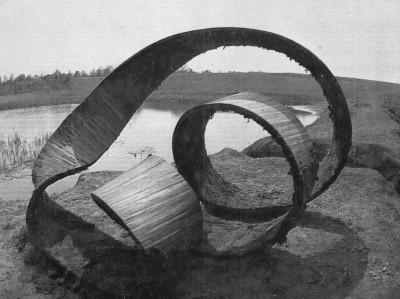
Wanda Mihuleac, Spiral, 1965. Poster for a concert by Octavian Nemescu
For the composer, the computer is an instrument in itself, it is very versatile as a medium but it is only a servant and nothing more. His pieces always have to start from an idea that has spiritual, cosmogonic implications and involves synthesizers and samples from nature. When defining “meta music” or “imaginary music”, Nemescu is an advocate of looking from above, from the top of the mountain. Imaginary music is like an inner song, reverberation of music within the performer that also becomes his own composer, his own producer for an intimate music. Silence is very important in his work in order to keep the sound flowing and to reflect on the sound from before, as a space for a pause in thinking. So, 40 years ago, Nemescu put forward another kind of music: “a song that has not yet surfaced through human voice, any musical instrument, orchestra or other electroacoustic means: an intimate, interior, introverted inner sound that focuses on the individual and the imagination. Imaginary music is a reaction, it comes in contrast to the Spectacular, it is ANTI show. As a reaction to the idea of show, the imaginary concert will take place without spectators (observers) and critics (commentators). In this case, the transmitter, the one that sends the message, is also the receiver as part of a personal and inner Ritual that focuses on the effort of the imagination which excludes a passive stance. Thus, we have a AUTISTIC stance of Loneliness when playing this music where you only communicate with your SUPERIOR SELF.”
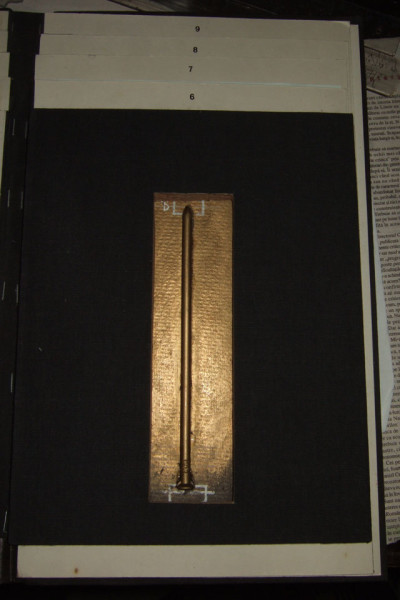
Octavian Nemescu, Muzica Imaginară / Imaginary Music (cover)
Octavian Nemescu uses music as a means of spiritual awareness, ignoring the state of laziness, sleepiness through art. It is no surprise that entertainment is a strange notion for the composer because, for him, music has a ritualistic function, it serves no cultural purpose. We cannot make art for the sake of art, we cannot cultivate beauty for the sake of beauty, and culture needs a new revelation in order to transcend itself, perhaps with the help of archetypes: these permanent and essential entities that have remained unaltered by cultural trends throughout history. “We need silence and a time of rest for reflection, for waiting in silence – today’s man has very few places of peace around him. We are spinning in a fragile, dizzy and sleepy world devoid of any prophecy”, the composer concludes.
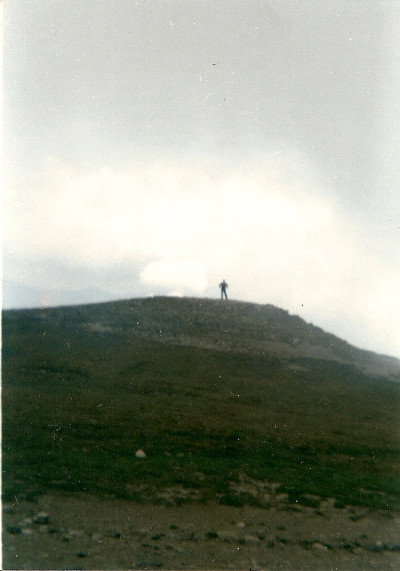
A portrait of Octavian Nemescu
This text was the result of a number of interview sessions with Octavian Nemescu that took place in September 2015.
POSTED BY
Miron Ghiu
Obsessed with new technology and a close manipulator of all sounds, Miron Ghiu lives in a continuous present. He enjoys bathing online and hanging out offline, surrounded by loads of buttons to press ...
mironghiu.wordpress.com


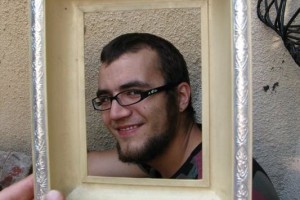
1 Comment
Here is a mixtape using only Octavian Nemescu’s work!
http://the-attic.net/audio/1622/composers-corner-podcast:-11.-octavian-nemescu-_-side-a.html